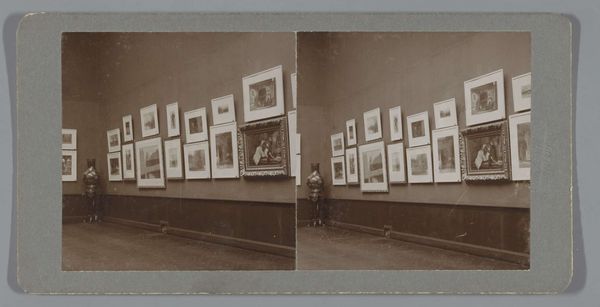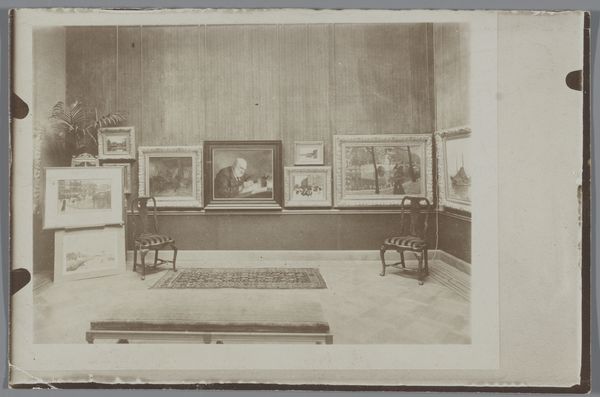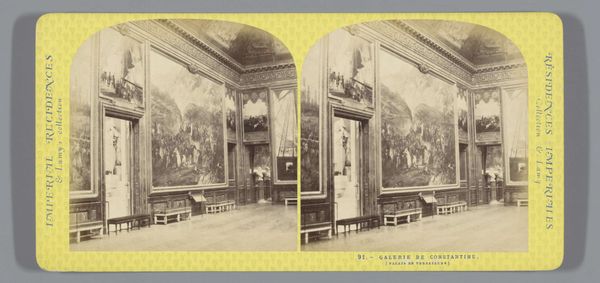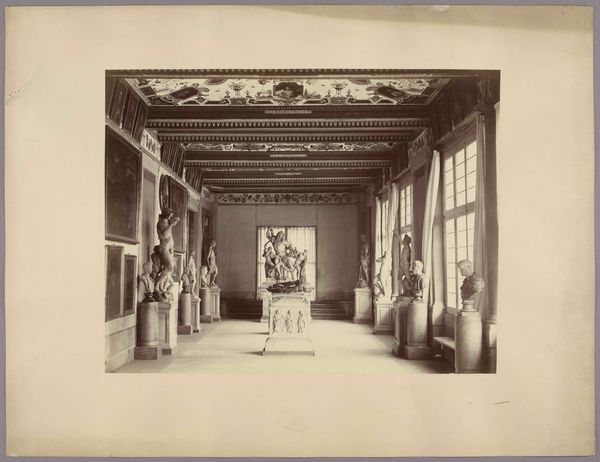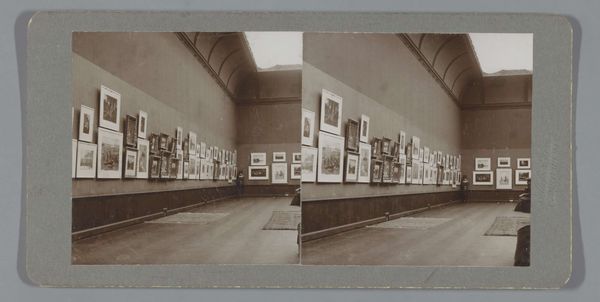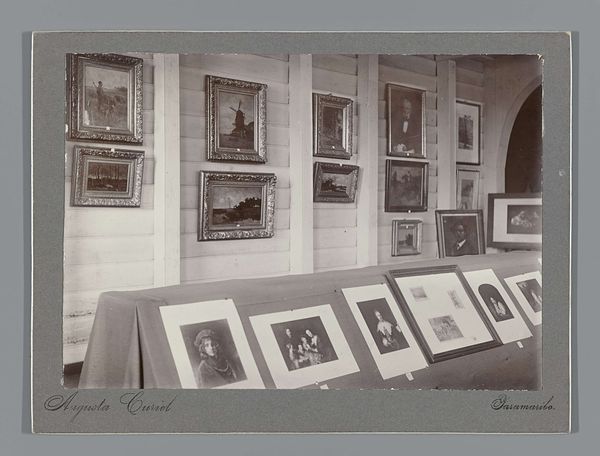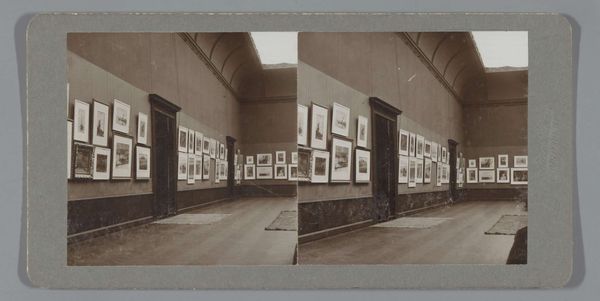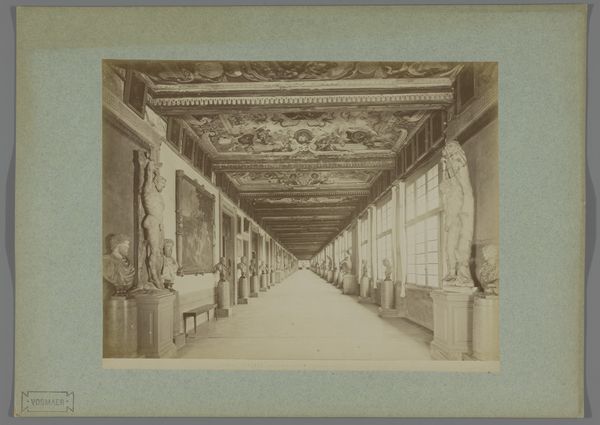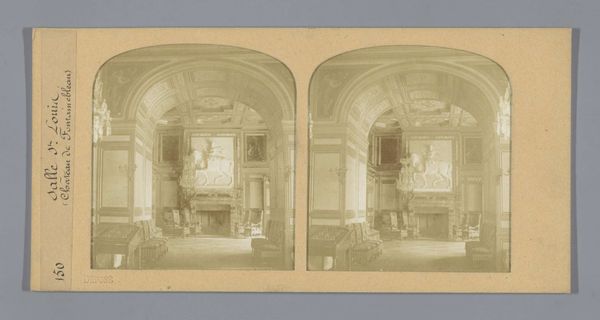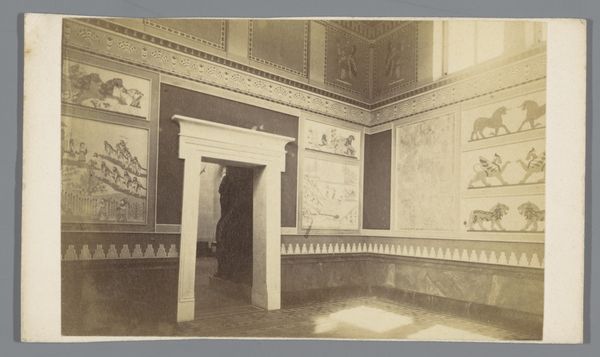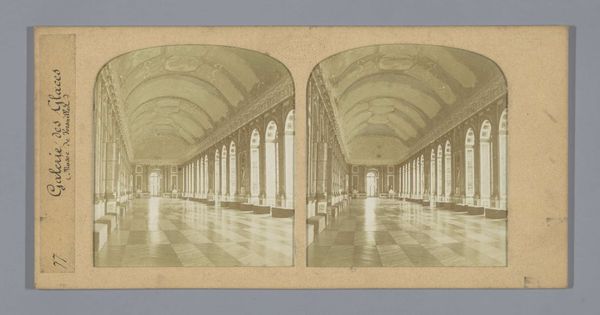
Dimensions: height 87 mm, width 177 mm
Copyright: Rijks Museum: Open Domain
Curator: Looking at this piece, "Zaal met olieverfschilderijen in het Neues Museum Weimar," dated between 1868 and 1890 and attributed to Hermann Selle, the first thing that strikes me is the sense of quiet reverence it captures. It's as if we've stumbled into a hushed hall, filled with the weight of art history. Editor: It gives me an oddly clinical feeling, almost like looking at a medical photograph. The precise lines of the room, combined with the aged monochrome palette, seem to dissect rather than celebrate the art on display. It seems like the piece documents more than commemorates. Curator: That's a perceptive reading. I see the photographic nature less as clinical and more as a document of its time. As a medium, photography, especially during this period, becomes incredibly important. We see how museums are framing their collection and presenting them to the public. The art hangs salon style, packed, speaking volumes about nineteenth-century curatorial practices. The prints provide insights into the institutional role in shaping artistic taste. Editor: I’m still hung up on the photographs themselves. They give a ghost-like presence to the artwork. The subjects within the paintings, figures and scenes rendered in grayscale, begin to almost lose their identities, don't they? Or is it the other way around; are they reborn? Curator: It certainly prompts contemplation on cultural memory and its fragility, right? It suggests that even these grand historical narratives depicted in the paintings are subject to being filtered and reframed through time and technology, their original emotional and cultural contexts inevitably shifting as we view them through the lens of modernity. We now can bring them here, consider these lost paintings or recontextualize them. Editor: The visual dialogue feels very self-aware, don't you think? An artwork about artworks displayed in a museum setting – and presented here as a stereo print—is multilayered, showing an inherent need to frame art. I'm particularly struck by how these seemingly objective views unintentionally convey a powerful cultural narrative about display. Curator: Exactly! And on the interplay between art, its display, and cultural transmission, I’m wondering who might be visiting this museum and seeing these artifacts for the first time? We see two different things looking at it but maybe these paintings are a cultural touchstone. Editor: Well, it all certainly leaves one pondering the layers of perception—how art, space, and even time all play tricks on our eyes. I hadn't considered how we could get here through an artifact, it seems this print can transcend boundaries!
Comments
No comments
Be the first to comment and join the conversation on the ultimate creative platform.


